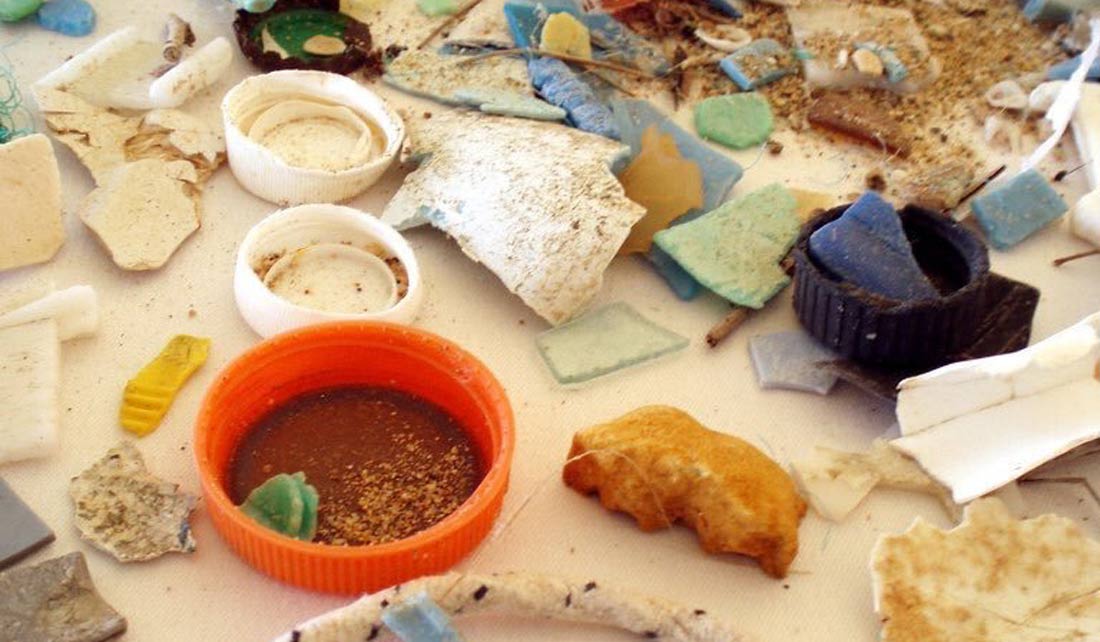
Gillian Flippo is interning with Illinois-Indiana Sea Grant (IISG) as a recent graduate of Butler University with a bachelor’s degree in Science, Technology and Society.
I am a native of Chicago, and working for the health of my local environment and community is of great interest to me. As an intern for the IISG pollution prevention team led by Sarah Zack, I was fortunate to attend the 2018 Emerging Contaminants in the Aquatic Environment Conference (ECAEC), held June 5-6 in Champaign, IL. Newly developed chemicals and substances are used to improve processes and products; however, they often have unintended consequences on human and environmental health, which is why they are of emerging concern. Regardless of whether these contaminants are old or new, many brilliant minds are working to understand their effects, how they move through the ecosystem and how to properly prevent and remove them. At ECAEC, I witnessed these minds come together. Organized by the Illinois Sustainable Technology Center and Illinois-Indiana Sea Grant, the conference covered many important topics related to emerging contaminants over the course of two days.
A Widespread Problem
Keynote speaker Rainer Lohmann, a professor at the University of Rhode Island, studies the transport, fate and bioaccumulation of persistent contaminants. His findings demonstrated that these contaminants are not only found at the sites where they are being released. Through various methods such as the movement of water by ocean currents, the contaminants spread to some of the most remote places on earth.
These places that were once thought to be pristine, like the Arctic, are also feeling the effects of these potentially damaging chemicals. I learned that part of the reason these contaminants are found around the globe is because wastewater treatment plants aren’t designed to remove many pharmaceuticals and personal care products (PPCPs). Therefore, they are released into nearby streams and rivers, which eventually make it to the ocean.
Mitigation and Prevention

Alison Franklin, PhD student at Penn State, speaks at the 2018 Emerging Contaminants in the Aquatic Environment Conference.
Fortunately, there are scientists like Alison Franklin from Pennsylvania State University, who are researching ways to mitigate the emerging contaminants released from wastewater treatment plants. Her research demonstrates the possibility of using soil as a natural filter to improve water quality and protect human health, focusing on antibiotics in wastewater effluent. Her results showed that groundwater concentrations of antibiotics were lower than the wastewater effluent concentration after being filtered through soil. This suggests that soil may be an adequate third step in wastewater treatment. I found this interesting because the process uses part of nature as a partner to help combat environmental challenges like emerging contaminants.
A wide variety of professionals attended the ECAEC, providing a multi-disciplinary approach to solving the problem of emerging contaminants. Jill Bartolotta from Ohio Sea Grant offered an interesting perspective on the issue, focusing on single-use plastic and the underlying behavioral barriers that inhibit people from using reusables. Her study sought to tackle the problem from the source so that plastic is prevented from getting in waterways in the first place. One interesting piece that caught my attention was that Bartolotta’s survey results showed that people have enough reusable bags, but they forget to bring them to the store. Therefore, people don’t need more reusable bags but instead need new ways to be reminded to use them. This shows that we need to dig deeper to find a new approach to tackle the problem of single-use plastic.
Takeaways
Bartolotta’s talk especially captivated me because it was relevant to my interests in engaging the public on environmental issues. For PPCPs and other emerging contaminants like plastic, it is important to understand the real source of pollution: people and their practices. People may unknowingly pollute because they are simply unaware that what they are doing is wrong, which is why education is important. Or there may be behavioral barriers and incentives that lead people away from environmentally sustainable options, which is why understanding the underlying causes and thinking of alternative solutions are important.
It was incredibly eye-opening to see the research and effort that is being put into tackling the issue of emerging contaminants in the aquatic environment. It became obvious to me after listening to the conference speakers that this issue needs input from many disciplines for us to truly understand and solve the problem. Despite the size and complexity of the issue, it made me feel hopeful to know that it has the potential to be fixed. The conference was great to experience in the beginning of my internship because it helped me understand the work and research going into understanding the issue of emerging contaminants, while challenging me to think of effective ways to communicate the problems to the public.

